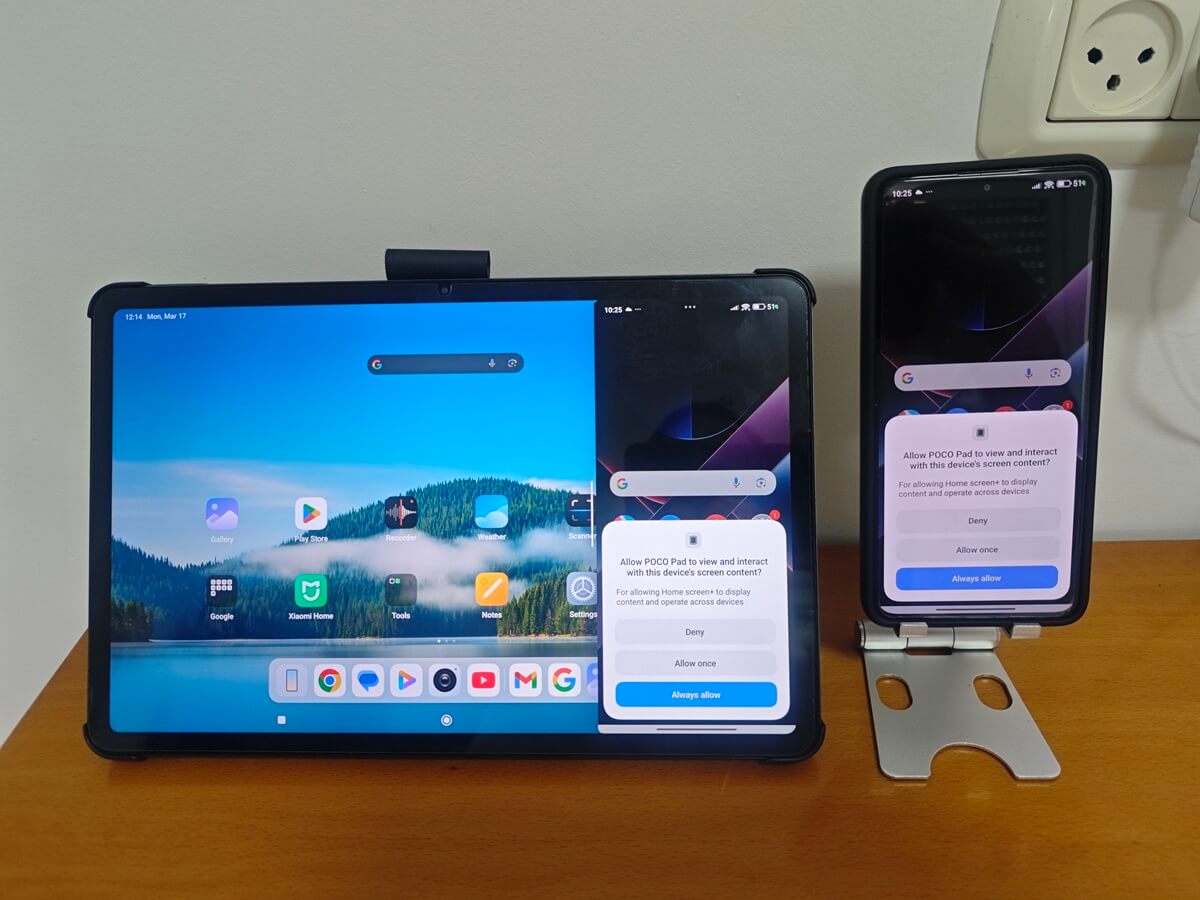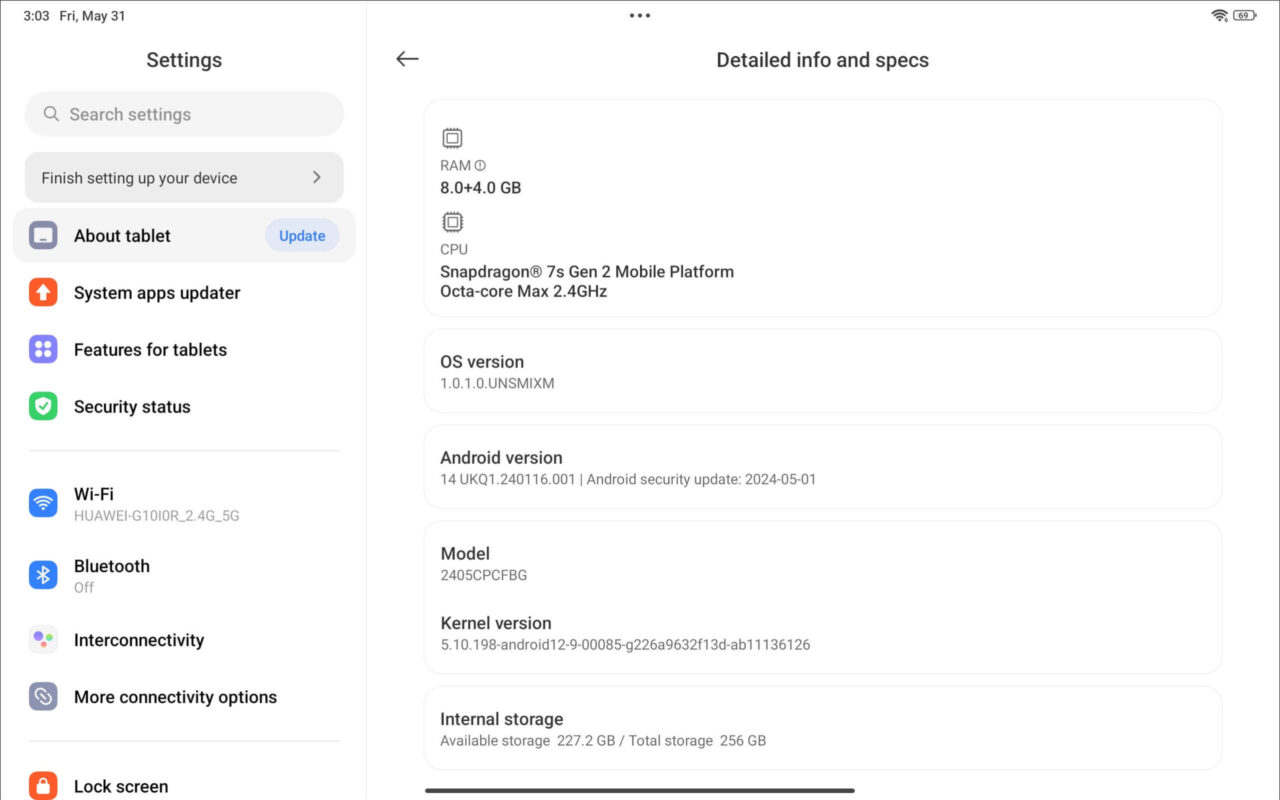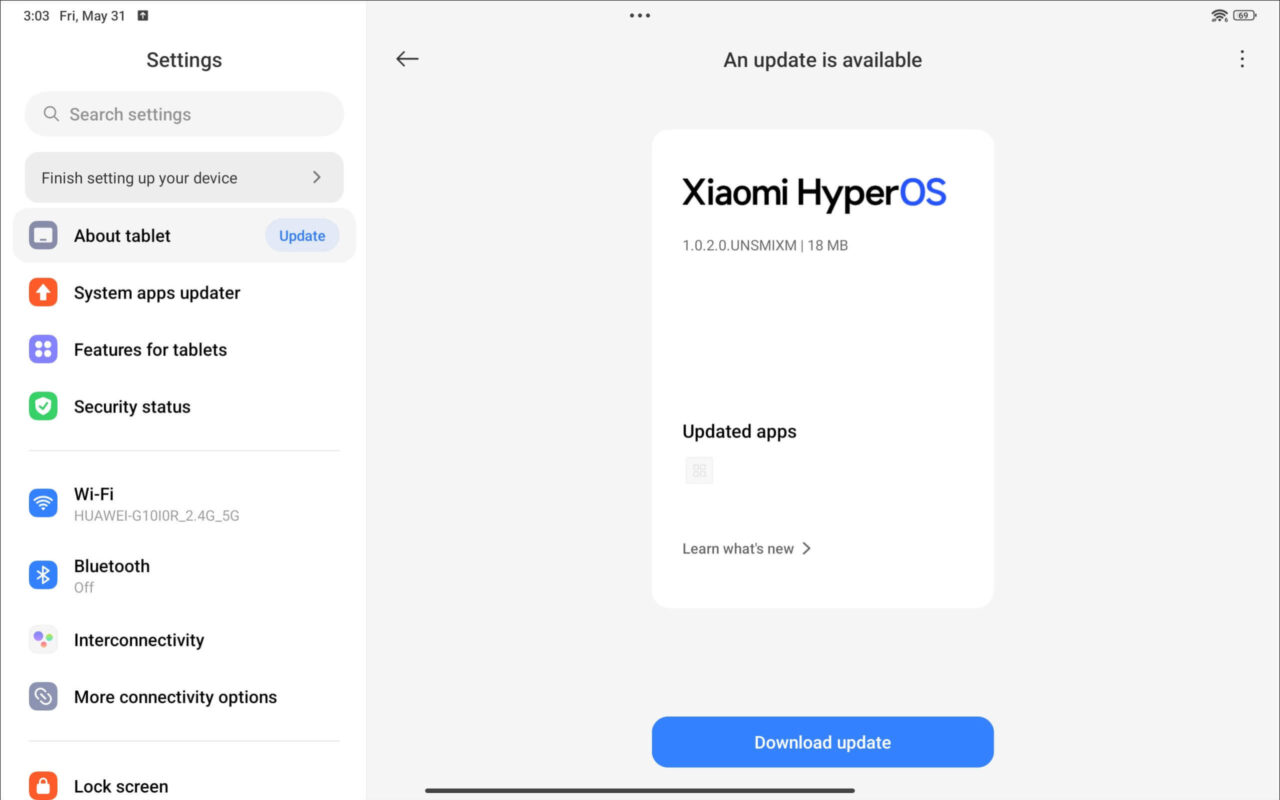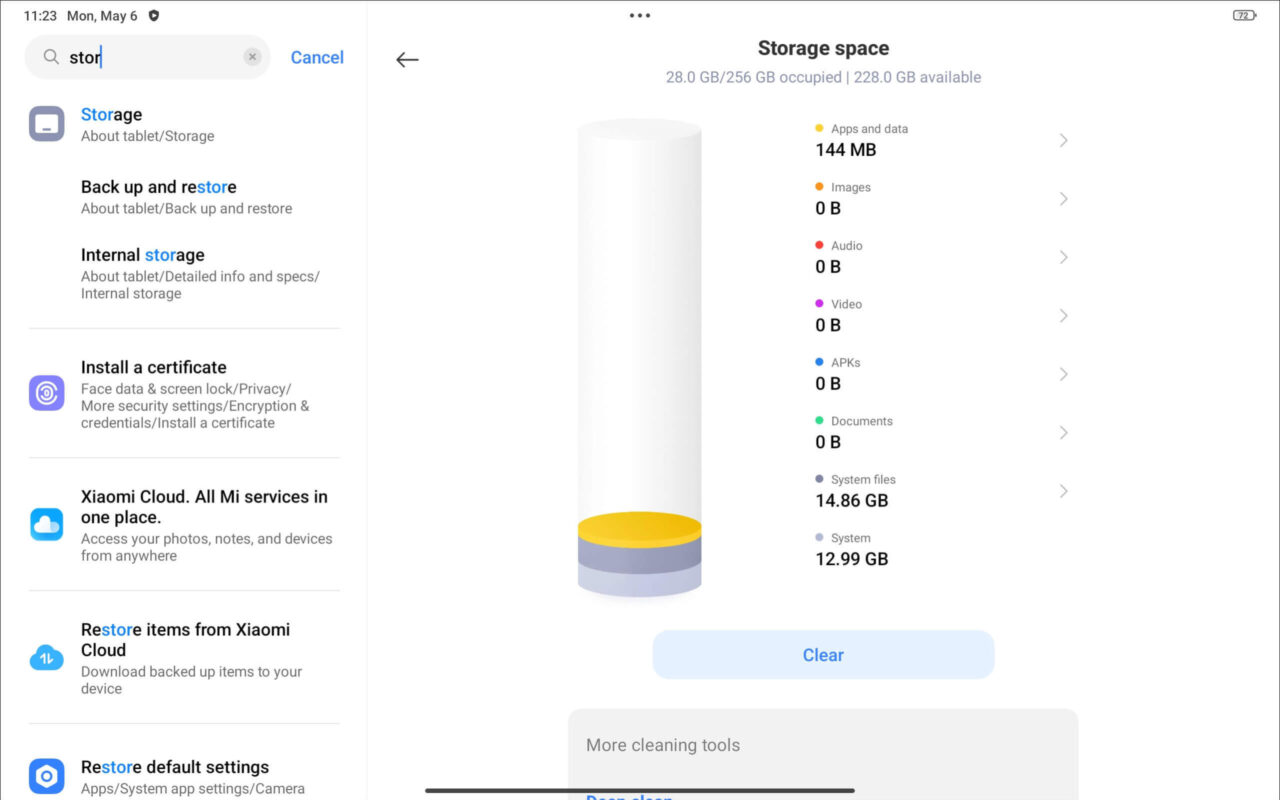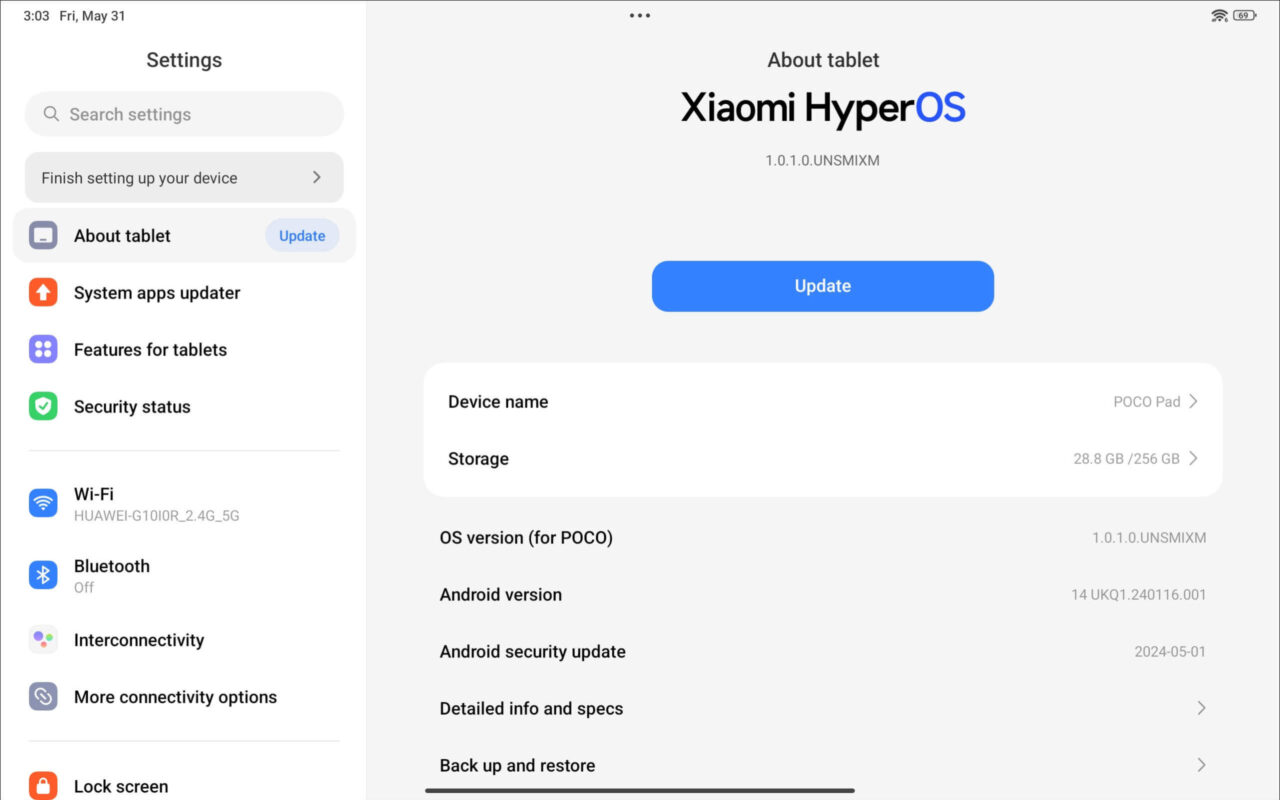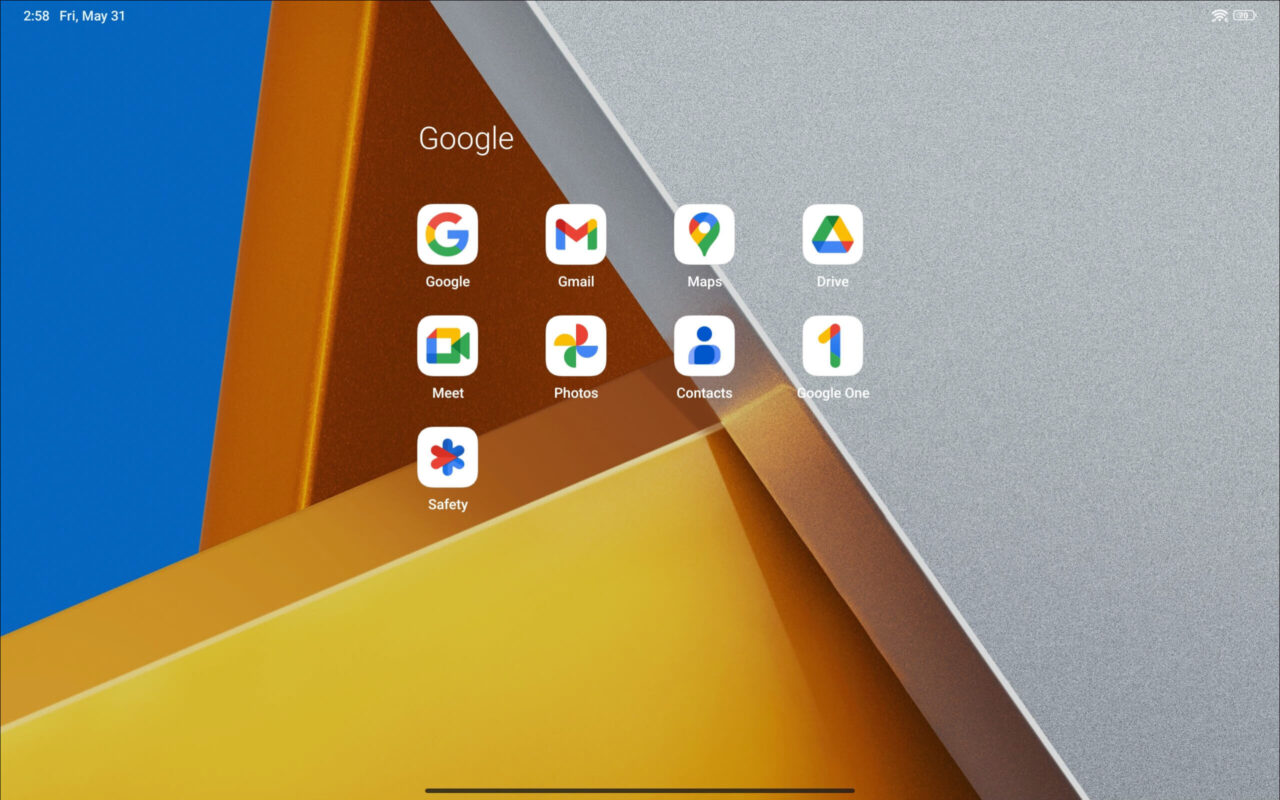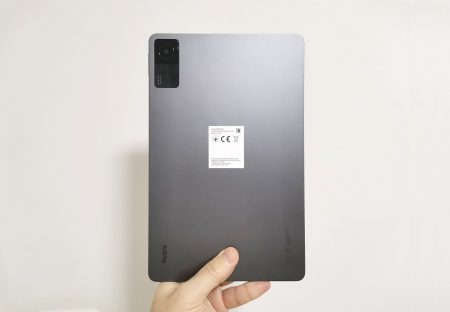Display
The Poco Pad display features a great-looking 12.1″ IPS LCD panel with a resolution of 1600 x 2560 pixels and a refresh rate of 120Hz. According to our impression, it is highly responsive and offers excellent viewing angles. The product specifications state that it boasts a maximum brightness level of 600 nits, ensuring crystal-clear visibility even under the sunniest skies.
Testing the visibility of displays in strong sunlight conditions.
For this simple test, we manually adjusted the brightness level to its maximum and checked if the display is readable. With 600 nits of brightness, the results were average, but not entirely bad. The display remained readable even under intense light, but a minimum of 1000 nits brightness would be more helpful. The solution is to use the device in a shaded environment with minimal reflections and exposure to sunlight.

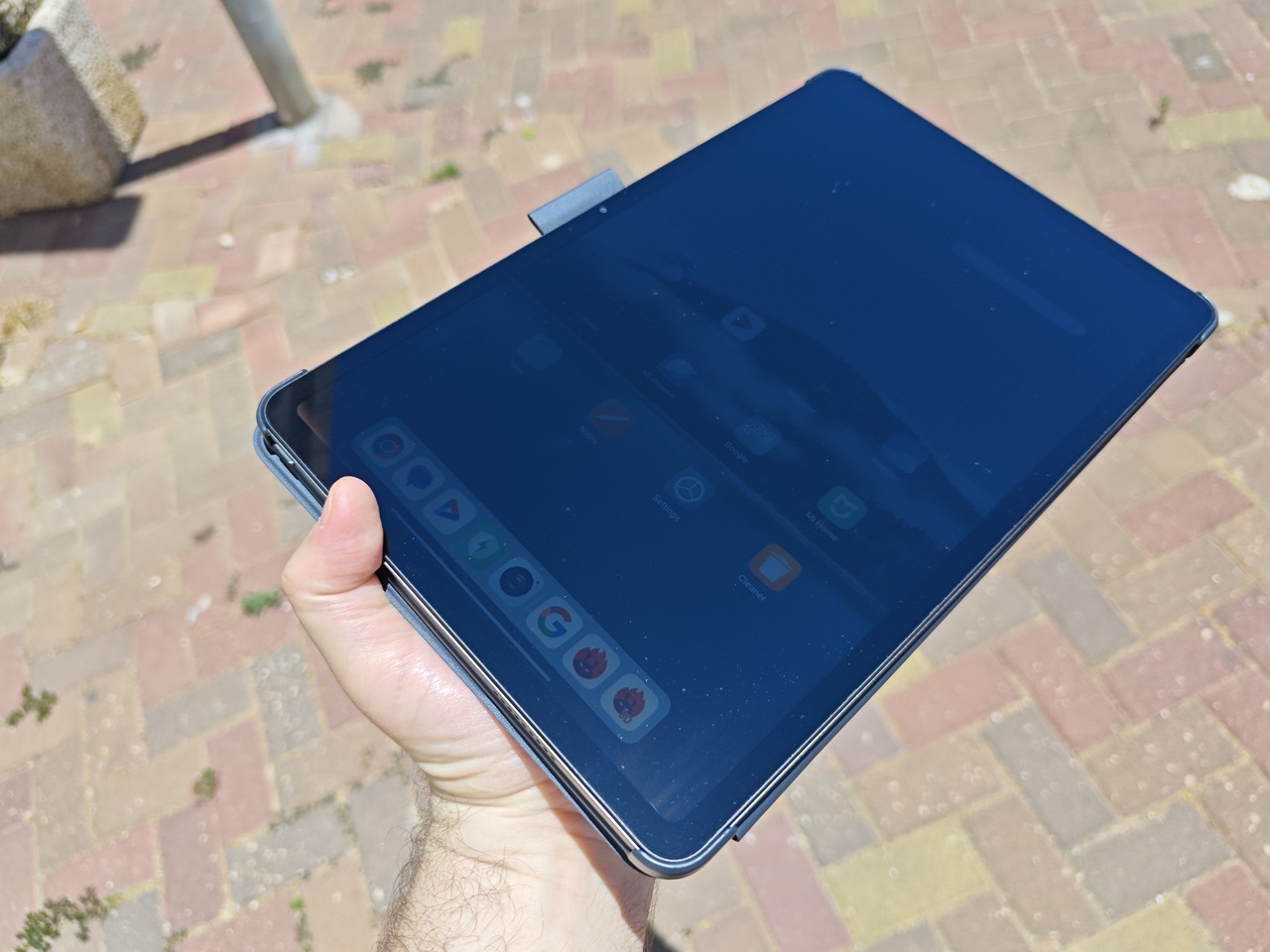
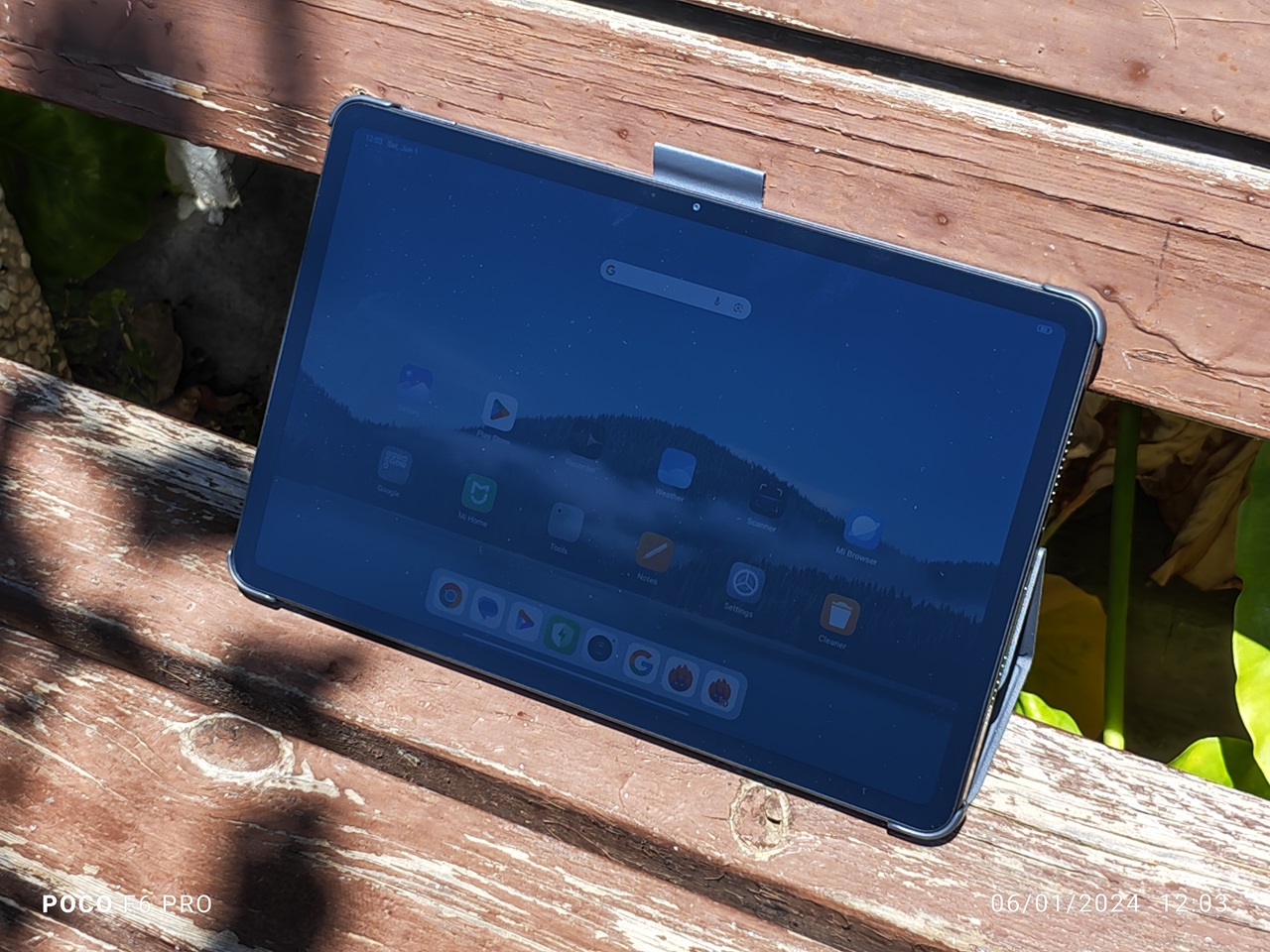

What’s a TÜV Rheinland certified device is and why it is crucial for the health of your eyes?
The specifications of the tablet align with the utmost standards of eye protection for users, rendering it an essential feature that must never be overlooked.
- TÜV Rheinland Low Blue Light (Hardware Solution) Certified: This certification assures that the display or device has undergone testing and has been certified to emit reduced levels of blue light. Blue light can lead to eye strain and disrupt sleep patterns, so having a Low Blue Light certification means the device is specifically designed to emit less harmful blue light, making it more comfortable for extended use.
- TÜV Rheinland Flicker Free Certification:This certification guarantees that the display or device has undergone rigorous testing and has been proven to be flicker-free. Flickering screens can lead to eye strain and fatigue, so obtaining a Flicker-Free certification means the device maintains a steady light output without any discernible flicker, offering a more comfortable viewing experience.
- TÜV Rheinland Circadian Friendly Certified: This certification indicates that the display or device is designed to be circadian-friendly, meaning it minimizes disruptions to your body’s natural sleep-wake cycle. Circadian-friendly devices typically reduce blue light emissions, maintain appropriate brightness levels, and avoid flickering, all of which can help support healthy sleep patterns and overall well-being.
The certifications from TÜV Rheinland guarantee that the devices meet precise standards that effectively minimize eye strain, enhance visual comfort, and contribute to overall eye health.
Quad speakers for immersive stereo sound
One of the standout features of the tablet is its exceptional support for Dolby Atmos, accompanied by a remarkable quad-speaker sound system. Xiaomi has ingeniously placed speaker grille holes on both the left and right sides of the tablet, ensuring an unparalleled level of sound dispersion. If you’re concerned about sound quality, rest assured it’s good. While the sound levels may not be through the roof, the audio is clear, and the bass effect is quite reasonable. As an added bonus, Poco has included a headphone jack with this device, which is a feature that iPad users unfortunately lack. This not only sets the product apart, but also adds considerable value to it.
Hardware
The hardware is powered by an Octa-core Snapdragon 7s Gen 2 processor that operates at a peak frequency of 2.4GHz. This processor makes it an excellent choice mostly for casual everyday use.
While it may not be designed for running heavy, intensive games, it is still capable of handling some. This tablet is ideal for everyday tasks. The specifications are perfect for students who require a portable notebook style with smart pen features similar to the Apple iPad Pro, but without breaking the bank. It is also great for those seeking a tablet for entertainment purposes, to watch their favorite streaming services like YouTube, Netflix, Amazon Prime, and more.
Software
Powered by Xiaomi HyperOS, everything remains clean and free from unnecessary bloatware. The only pre-installed application that comes with the software is Netflix. Additionally, Xiaomi has included some exciting new apps: Mi Canvas for sketching with their smart pen, as well as the Mi Mover app, which allows you to transfer files between all Xiaomi devices wirelessly without using any cables.
What is the current amount of available space?
Upon receiving the review sample, the tablet was pre-installed with HyperOS 1.0.1.0 and subsequently updated to version 1.0.2.0, so naturally we updated the software. Additionally, our device with 8GB RAM and 256GB storage offers an impressive 228GB of available space. Furthermore, Poco has incorporated a Micro SD Card slot that can support cards up to 1.5TB, providing a significant advantage. To sum up, our user experience has been exceedingly positive.
Poco Pad, featuring Xiaomi’s HyperOS (Screenshots)
Interconnectivity
Drawing from our experience, this service demonstrates remarkable effectiveness. Although we encountered a few minor lag issues, the overall performance remains impressively smooth.
Also known as Screen Mirroring, this cutting-edge feature enables you to effortlessly replicate your phone’s display on the tablet’s desktop interface. You can continue to use your phone, accessing all your apps and even the camera seamlessly. To activate this feature, you’ll need to log in to your Xiaomi account on both devices: the Poco Pad and your phone.
After completing this step, you’ll receive a notification request on your phone, and you’ll be ready to begin. At this point, you should see a rectangular icon on your Poco Pad desktop that you can click to activate the feature.
Xiaomi Interconnectivity
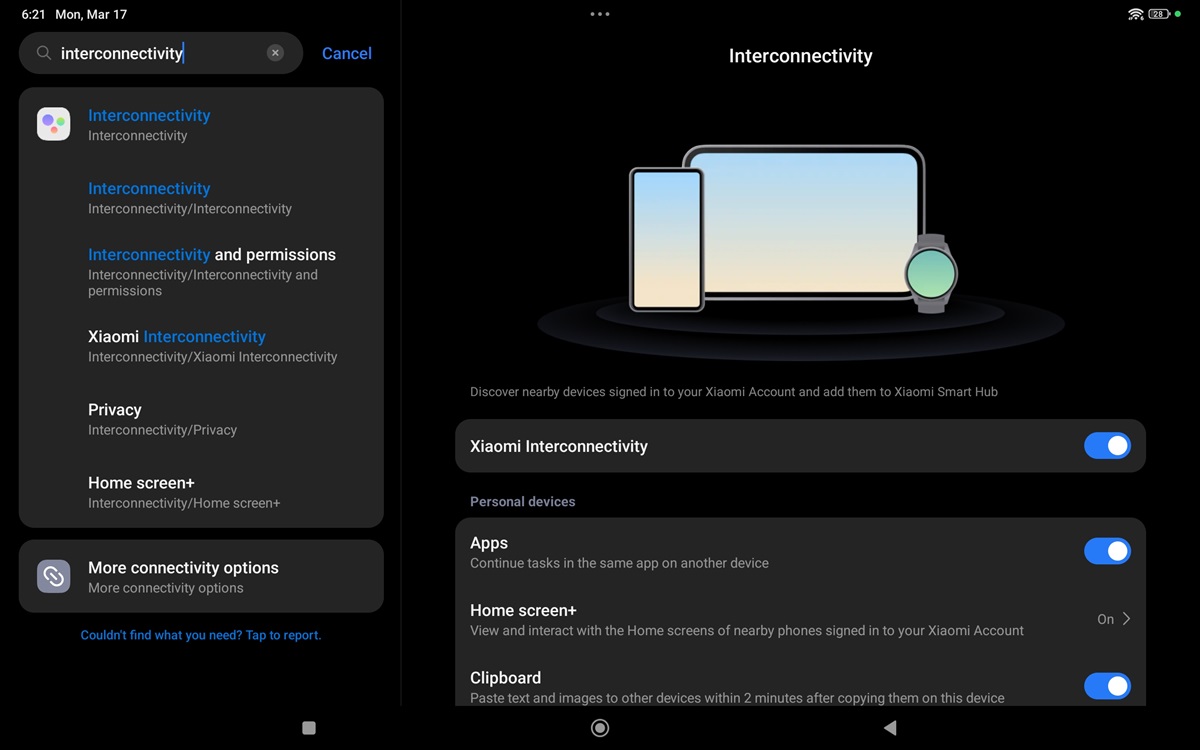



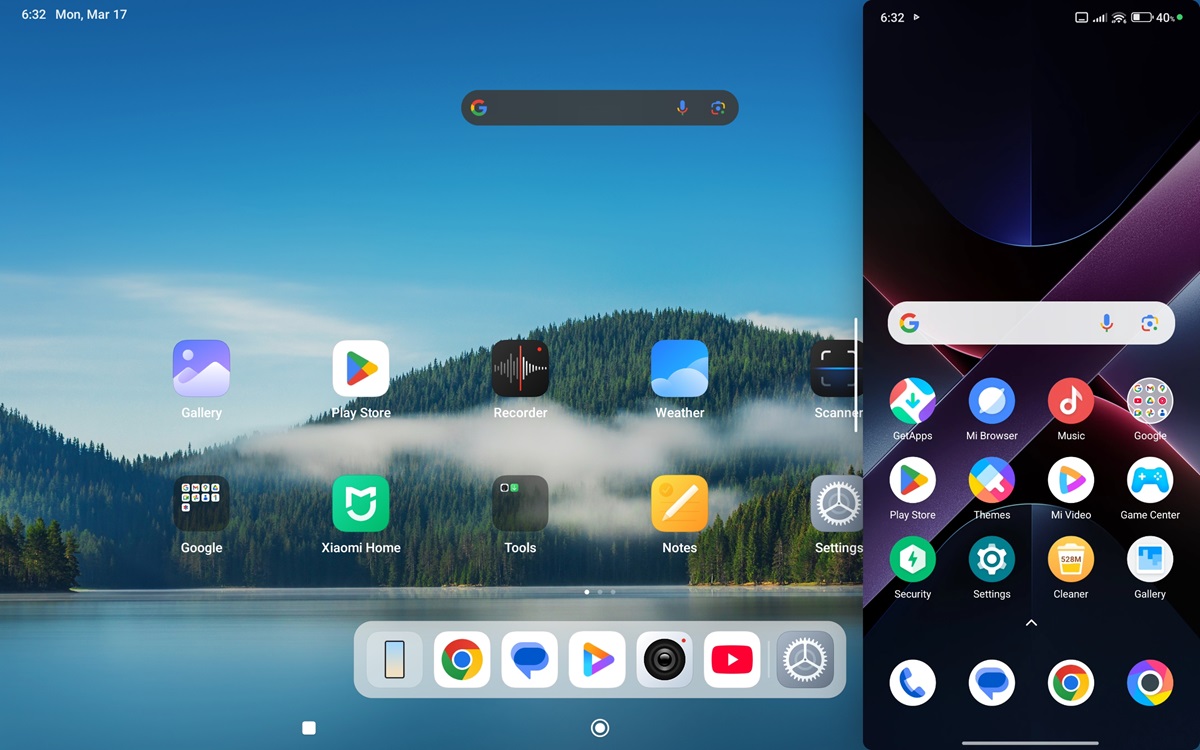
Xiaomi Interconnectivity – Pairing with the Poco X7 Pro smartphone
Once the pairing is completed, you can utilize the Poco Pad to fully access your phone’s apps, browser, contacts, and even initiate phone calls, all from the tablet. This functionality allows you to work efficiently on the go while still maintaining access to your nearby mobile phone.
